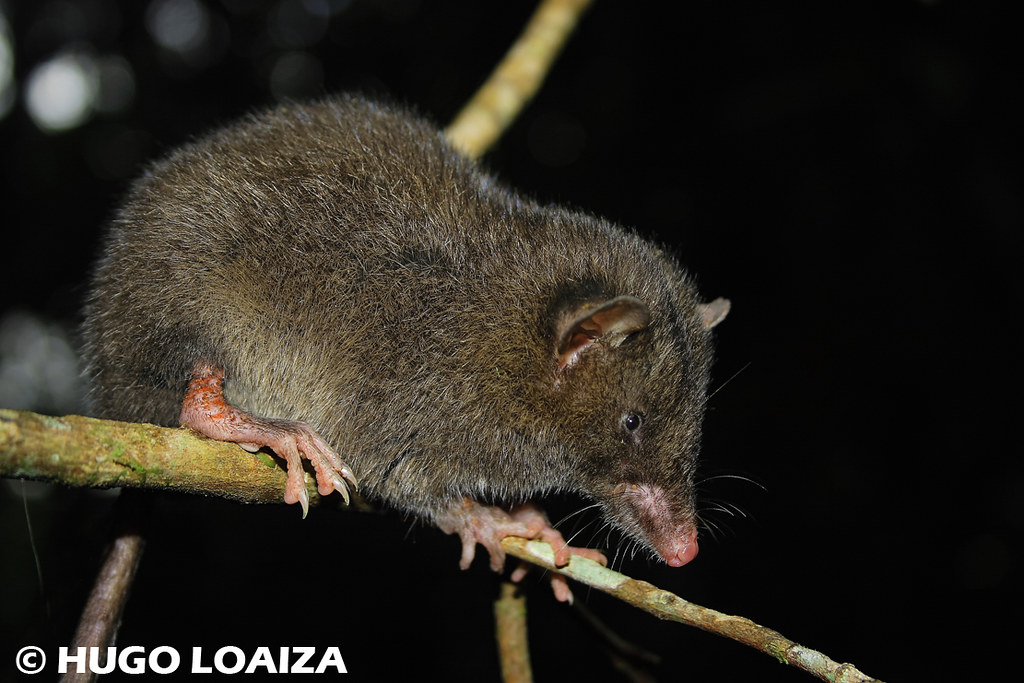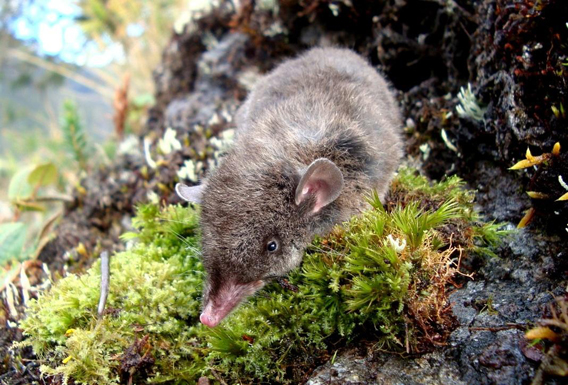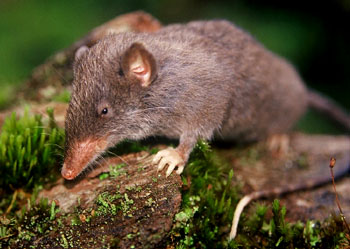Caenolestes
Ecuador Opossummaus ( Caenolestes fuliginosus )
The authentics Opossummäuse or Mausopossums ( Caenolestes ) is a marsupial genus of the family of Mausopossums ( Caenolestidae ). The genus includes five species that live in the Andes in northwestern South America.
Description
These animals are similar in appearance to the shrews, with whom they are not related. Their snout is elongated, the eyes are small, the ears, however, are large and protrude from the skin. Her long, soft fur gives a shaggy impression it is at the top of brown or black, the underside is lighter. The short legs end in five toes. The front paws have the outer two toes claws, the inner three nails on the hind paws have all the toes except the innermost claws. The hairless tail is as long as the body. Actual Opossummäuse reach a head -body length 9-14 centimeters and a weight of 16 to 40 grams, with males significantly heavier than females. Like other species of the family Mausopossums also have the members of this genus of marsupial unusual lip flaps, which probably ensure that the animals do not accidentally get ground into the mouth.
As well as other types of Mausopossums the the actual types Opossummäuse have a typical family of teeth with enlarged lower central incisors which project forward, and the reduced number of cutting teeth in comparison with other bags mammals. The species of the genus have four incisor teeth ( incisors ), a canine ( canine ), three premolars ( Praemolares ) and two molars ( Molar ) in a maxillary half mandible they have an incisor less per half. Overall, the animals have corresponding teeth 46.
Like other bags animals also have the two Mausopossums uteri and vaginae two, also it is assumed that the number of the ovary corresponds to the number of the teat ( in contrast to the opossum ). The types of authentics Opossummäuse have no stomach pouch ( bag); However, they have four teats, two of which are located on the belly side on the abdomen.
Way of life
Habitat of these animals are mountain forests and meadows in 1500 to 4000 meters above sea level. They prefer cool, moist habitats with plenty of vegetation. They are nocturnal ground dwellers, mainly staying on the ground, but in case of need also can climb well. For quick progress they put tunnels or trails to the dense undergrowth.
Actual Opossummäuse are primarily carnivores, their diet consists of insects and their larvae, worms, and out of small vertebrates.
Reproduction
The females have four teats, but no bag. The mating season is in the summer, the litter size is estimated at one to six pups. This spending their first weeks of life at the teat of the mother hanging, only protected by the coat.
Threat
Actual Mausopossums are shy, little-known animals. Due to its inaccessible area of distribution, there are no accurate data on the hazard, but one suspects that they are more frequent. None of the species is listed as endangered or threatened.
The types
The genus contains five species, with a kind was first described in 2013.
- The Graubäuchige Opossummaus ( Caenolestes caniventer ) lives in southern Ecuador and northern Peru.
- The Andean Opossummaus ( Caenolestes condorensis ) is known only from a small area in southern Ecuador.
- The Dark Opossummaus ( Caenolestes convelatus ) is located in western Colombia and northern Ecuador.
- The Ecuador - Opossummaus ( Caenolestes fuliginosus ) is the best known of the five types. She is in Ecuador, widespread in northern and western Colombia and western Venezuela.
- Caenolestes sangay was described only in December 2013, and is only from the eastern Andean slopes in Ecuador known.









